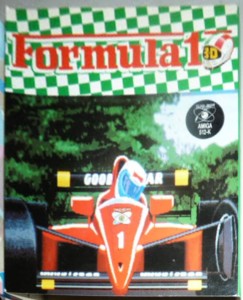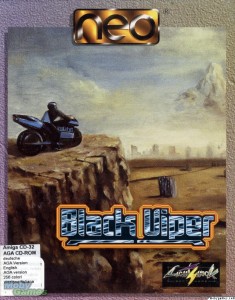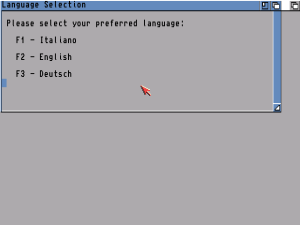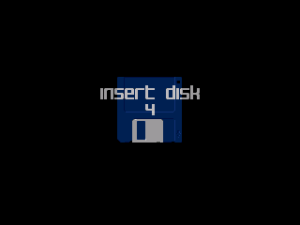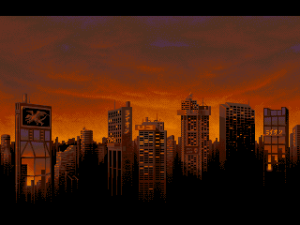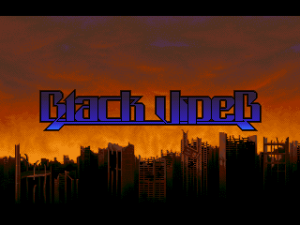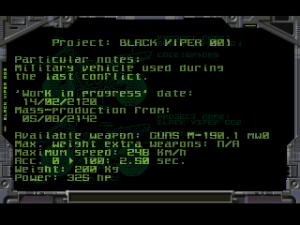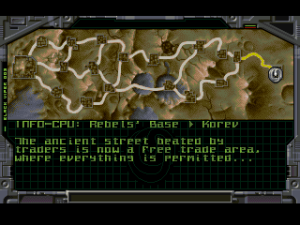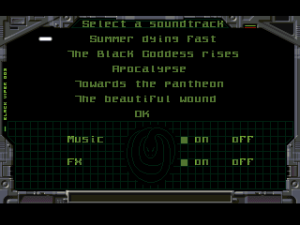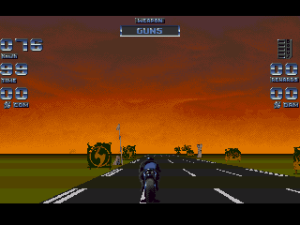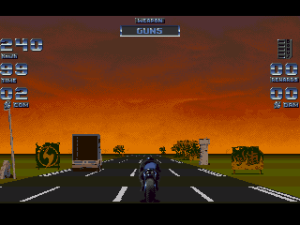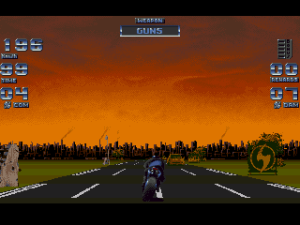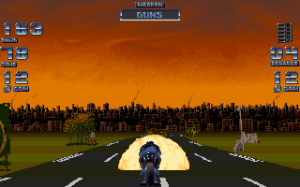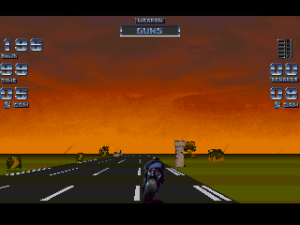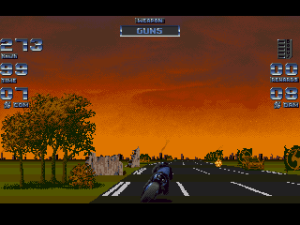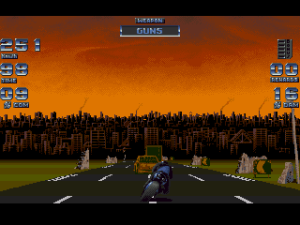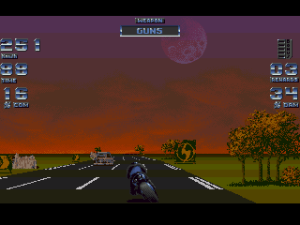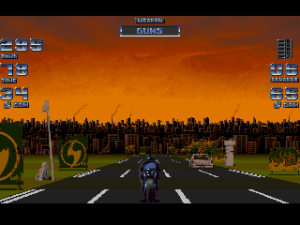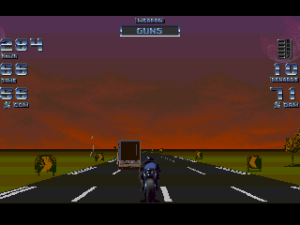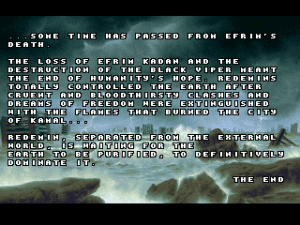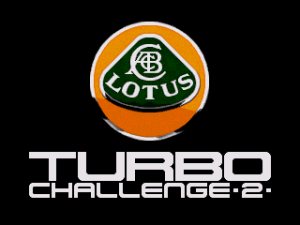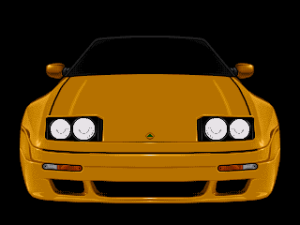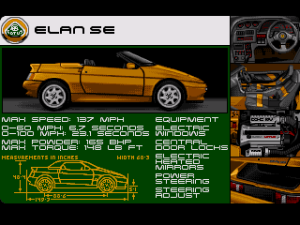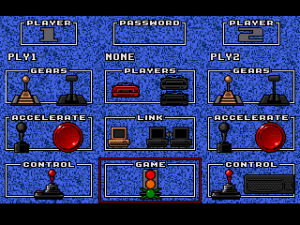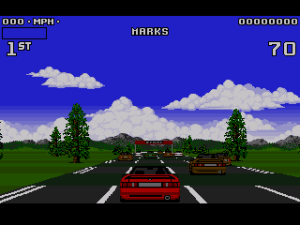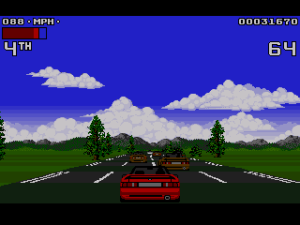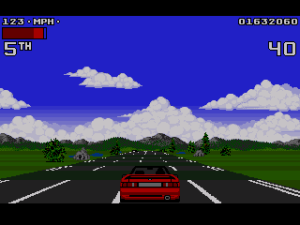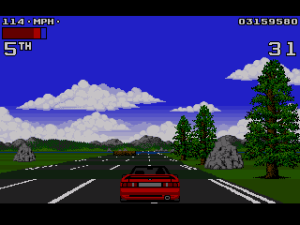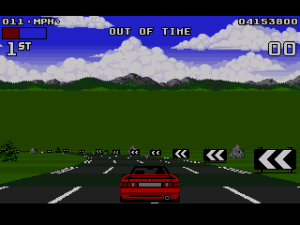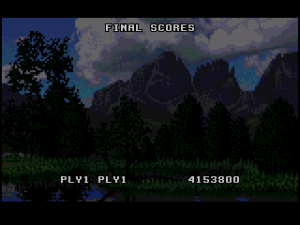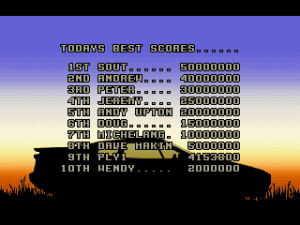Even though the Amiga first came out in 1985, the games I’ll be looking at today were all from the 1990s. The Amiga was already ahead of its time, but now we’ll be looking into the future for one stop on our journey through console and computer hardware.
If this unsettles you, don’t worry. Our next stop will be like a visit to an old-timey pioneer village, complete with people talking all funny while pretending to churn butter for school kids on a field trip.
Formula 1 3D (1991)
This is the first polygon-rendered racing game that I’m reviewing on this here blog. And it’s from 1991. When did polygon rendering become mainstream in console gaming? That was squarely around the mid 1990s, wasn’t it? Star Fox came out for the Super Nintendo in 1993, and everybody shit their pants at the primitive wonder of it all.
Simulmondo was an Italian software publisher that specialized in soccer games, from what I could tell. Those aren’t really my cup of tea, but I do have to admit I’ve been impressed by the quality of their games.
By the appearance of corporate logos everywhere in this game, you might be thinking that this has some kind of sponsorship or some link to those corporations. This is unlikely, and the appearance of these brands is more probably because of the less restricted copyright laws over in Europe at the time.
All of the graphics are extremely well done. From the static menu screens to the 3D rendered polygon car images that adorn them, they look fantastic. The in-game graphics are gorgeous too, and are part of the reason why I’m including this game in my Amiga reviews. Remember that this computer came out in 1985. If you read my Golfyssey reviews, you’ll remember that the Amiga had one of the first true-3D golf video games too.
Before you begin your race, there are some setup options. You can choose between one or two players, three levels of difficulty, and three levels of graphical display detail. The game is automatically set to display the highest detail. As you make your settings, 3D polygon rendered race cars zoom in, rotate, and zoom out again, like in the screenshots below:
Pressing the joystick button on one of these cars doesn’t choose it, and I don’t think there is a “choice” of race car. The cockpit looks the same no matter what, from what I could tell.
This is a first-person racer, and before you get to the main race, you must qualify.
Forward accelerates, joystick back decelerates, left and right steer. The button shifts gears. Watch when you do because “reverse” is among the gears in sequence.
The transmission is automatic, however, and you don’t really need to manually shift gears.
But this game is hard. I have tried to pass this qualifying lap dozens upon dozens of times, but I just can’t seem to do it yet.
Whatever you do, do not hit the wall. You will spin-out and come to a stop.
If you’re lucky, you can move forward while turning sharply…
…but more often than not you will need to reverse for a while and then try to continue on your path.
One wall hit and spin-out is enough to make you run out of time.
This is one of the reasons why I don’t like first-person views in racing games as much as third person games. I can’t see enough of the road ahead of me in this view. If a racer allows me to change my view to zoom out so I can see some more road, I always do.
There is a map of the track at the top left of the screen, but things are moving so fast at 300mph that I don’t find it practical to keep glancing up there, taking my eyes off the road.
This was a particularly bad run-through, considering how the Amiga emulator’s screenshot hotkeys are mapped to End+PrntScrn. Seriously, WTF?
Even though I haven’t even qualified yet, I have to give this game some damn high marks. This is a very realistic simulation, which is what you’d expect from a company called Simulmondo, I guess. The frame rate isn’t as fluid as some other games, but for what you get, it’s impressive. The sounds are also excellent, and the Amiga’s sound reproducing capability was taken full advantage of here.
If you have an Amiga and you want a real racing challenge, then track this game down.
Black Viper (1996)
This game is kind of like a swan song for the Amiga, and not a lot of people bought it. By 1996, PC gaming had moved on to DOS and even Windows, and with Commodore’s board of directors filled by people of dubious character, the Amiga just couldn’t get the support it needed to keep up.
This game was also released for the pathetic-in-retrospect Amiga CD32, and I think “Black Viper” might be better remembered on that platform out of the hundreds of people who bought one.
This is, of course, a real shame. “Black Viper” is an extremely well-made racing game, and it’s one of the best games made for the Amiga. The premise seems a bit over-wrought: You are a lone resistance leader in a post-nuclear-apocalyptic world and you must race on your motorcycle the Black Viper to a Lost City… uh… save the world… something something… I didn’t pay attention to the rest.
What I did pay attention to is how great the game looks and sounds. I need to mention now that this version of the game uses the AGA chipset. This was a graphics hardware improvement that came out with the Amiga 4000 in 1992. Technically, AGA graphics look better than those for earlier models (OCS, ECS). From our perspective years later, the difference is hardly noticeable. And sadly for the Amiga, by 1996, DOS and Windows computers had surpassed the AGA capabilities. But this game is still visually impressive.
But it is a computer game, so this time I thought I’d show you some of the fun involved with that.
This is nail-biting, edge-of-your-seat stuff, no?
And since this is the disk-based version, be prepared to juggle floppies. I even had to do this with virtual disk images running in the emulator.
This is part of the intro… looks like your average Asian metropolis skyline at dusk…
… then BOOM! Nukular fuckin’ war.
There are some cinematic intros with data about the bike and stuff like that, but you can skip these with the joystick button.
You can then set up some options, among other things.
When you start the game, you get more of the back story.
You also get to choose the music when you race. The option to turn it off exists too. All of the music is excellent.
This is the racing view – third-person.
You have some data displayed on the left and right sides of the screen.
Joystick forward accelerates, back decelerates. Left and right steer. The button fires your weapon. That rusted out car ahead is an enemy car.
The car-destroying animation happens too fast for me to capture while I was playing, so I swiped the above screenshot from MobyGames.
There are innocent vehicles on the road, and they are marked as such when you get close to them. Don’t destroy those ones.
There are also power-ups on the road. This game moves by at an incredibly fast pace, so these power-ups are gone almost as soon as you see them, and your reflexes have to be very quick to get them. Some of them are ammo, some are shields, some are extra health.
Your timer starts running out from the moment you hit the road, so your priority is to beat the traffic however you can.
The scenery around you will change, and so will the colour of light in the sky. This is a great-looking and sounding game.
After cresting another hill, I can see another city. I almost thought this was my destination…
…but I ended up on the open road with only the horizon ahead of me again. I crashed and burned before I could make it.
There are no “extra bikes” or continues. Once you crash, you’re dead.
This is a very challenging game, but I’m going to be coming back to it. Just like “Formula 1 3D”, it taunts me from afar with its difficulty. It mocks me because I can’t even finish it’s first level. It points its finger at me and laughs. I can’t let that continue!
But you know what I mean. This is a great game. You will need an Amiga 4000 or equivalent to play this… or an emulator. It’s fast and exciting and definitely worth a look.
Lotus Turbo Challenge 2 (1991)
This is the second in a trilogy of very well-known racing games for home computers of the time. All three Lotus racing games are great, but I think this second one is the very best
The music is awesome, and this is one of the Amiga’s best performances right here. In fact, when I was searching for information about this game, I mostly found game music uploads to YouTube.
And of course, there’s the flashy graphical intro typical of many Amiga games.
This one includes stats on the particular Lotus car you will be driving.
The setup screen has an interesting option that I’ve never seen before. That is to change the method of acceleration from joystick forward to joystick button. I prefer to use the button rather than the same stick I steer with, so I chose the button option. You can also choose standard or automatic gear shifting. You can make these settings for Player 2 as well if you make it a two-player game. To start, bring the red outline back to the traffic light marked “GAME”.
Before each course, you are shown a brief intro screen.
Then you are counted into the race with the very proper and very British “Marks… set… GO!” Yes, there is an accent on the recorded voice you hear.
Steering is handled very well in this game. One of the things I find to be very disappointing in racing games is twitchy steering, where you barely touch the controls and you are sent careening off nearly out of control. This game almost goes to the other extreme.
Bumping into obstacles and other cars isn’t really a hazard to your car, but it is a definite hazard to your speed.
There are a number of checkpoints along the way on each course. You must reach these checkpoints before you run out of time, and to do so, you must keep your speed up at all costs. Turning too sharply will decrease your speed, so you must learn how to take corners fast without hitting the barriers along the roadside.
The graphics are, of course, beautiful. It’s hard to convey with screenshots just how smoothly animated everything looks as you race by.
The rolling hills and differently elevated terrain are the best I’ve seen in a racing game so far, and they really add to the immersive feel of this game.
Engine and tire sounds are very well done too, and they add to the realistic experience. There are some things that distract from the realism though. There are logs that lie across the road on some spots. And instead of crashing or swerving off course, your car will jump these as if they are ramps. I must admit, it is a lot of fun once you expect it.
And as fun as it is, this game is very tough to beat. I’ve only made it past this first course a handful of times, and as you can see above, this time I was too slow.
All racers are shown a summary for after the game
You know, it just wouldn’t feel right without those big words across the screen.
At least I beat Wendy.
The Amiga versions were far and away the best of the Lotus series, and like I said before, this second of them is the best of the bunch. Like the other two games I reviewed today, this one is indeed a challenge, and you need to sit your ass down and get cracking on it to get anywhere with it. But it’s so much fun, and it’s a great game that’s stood up very well in all the passing years. After all this time, it’s still a very fast racer that’s lots and lots of fun to play. Download the WinUAE emulator and try it out, or fire up your Amiga and load up that floppy.
